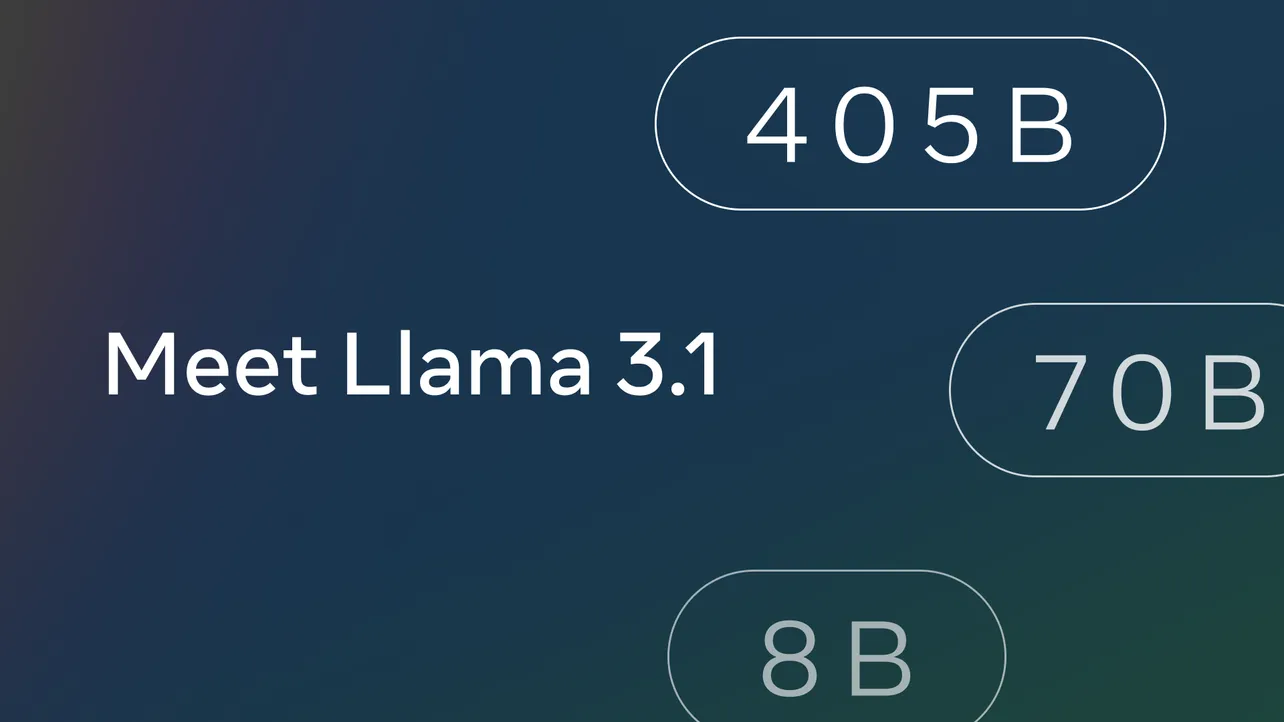- Meta releases Llama 3.1, the largest open-source AI model to date.
- Flagship 405B parameter model outperforms leading proprietary AI models.
- Features 128K context length and support for 8 languages
Meta has announced the release of Llama 3.1, its latest and most advanced open-source artificial intelligence model. This new version represents a significant leap forward in AI technology, with Meta claiming it outperforms leading proprietary models from companies like OpenAI.
The flagship Llama 3.1 405B model, featuring 405 billion parameters, is now the largest publicly available foundation model. It demonstrates state-of-the-art capabilities in general knowledge, math, tool use, and multilingual translation. The model was trained on over 15 trillion tokens using more than 16,000 of Nvidia's H100 GPUs.
One of the key improvements in Llama 3.1 is its expanded context length of 128K tokens, which is 16 times the capacity of previous Llama models. This allows the AI to process and understand much longer passages of text, enhancing its ability to handle complex tasks and generate more nuanced responses.
The new model supports eight languages: English, German, French, Italian, Portuguese, Hindi, Spanish, and Thai. This multilingual capability makes Llama 3.1 a versatile tool for developers and businesses working on global AI applications.
Meta is releasing Llama 3.1 in three sizes: 405B, 70B, and 8B parameters. Each size is optimized for different use cases:
- The 405B model is ideal for enterprise applications and advanced research, capable of long-form text generation, multilingual translation, coding, and complex reasoning tasks.
- The 70B model is suited for content creation, conversational AI, and language understanding.
- The 8B model is designed for applications with limited computational resources, such as mobile devices.
To facilitate adoption, Meta is collaborating with major tech companies like Amazon, Google, and Databricks to make Llama 3.1 available on various platforms. For instance, the models are now accessible on Amazon Web Services (AWS) through services like Amazon SageMaker JumpStart and Amazon Bedrock.
Mark Zuckerberg, Meta's CEO, emphasizes the importance of open-source AI, stating that it's key to democratizing AI benefits. He believes that open-source models like Llama 3.1 will eventually surpass proprietary ones in capabilities and adoption rates.
The release of Llama 3.1 also comes with an updated license that allows developers to use the model's outputs to improve other AI systems. This move is expected to accelerate innovation in the AI field and provide developers with more flexibility in building and customizing AI applications.
Meta's commitment to open-source AI is reminiscent of how Linux became the dominant open-source operating system for many devices and servers. The company hopes that Llama 3.1 will similarly become a cornerstone for AI development.
As AI continues to evolve rapidly, the release of Llama 3.1 marks a significant milestone in making powerful AI models more accessible to developers and businesses worldwide. It sets the stage for a new era of AI innovation, where open-source models compete directly with, and potentially surpass, their proprietary counterparts.

